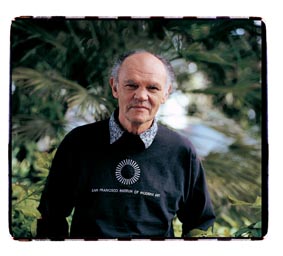Are you a journalist? Please sign up here for our press releases
Subscribe to our monthly newsletter:
Years of basic research into how crystals form have now proven relevant to probing the anti-malarial properties of common drugs.
Malaria is a leading killer. While mostly confined to sub-Saharan Africa, regions in Asia, and Central and South America, it infects an estimated 300 to 500 million people every year and kills between one and three million, most of them children under the age of five.
The new study, conducted by Dr. Ronit Buller and Prof. Leiserowitz of the Institute's Materials and Interfaces Department, as well as Dr. Matthew Peterson and Dr. Orn Almarsson of Boston-based Transform Pharmaceuticals Inc., has uncovered the precise mechanism by which common anti-malarial drugs zero in on their parasitic target. Like most living organisms, malaria parasites require amino acids and iron. They obtain them by penetrating the host's red blood cells, where they munch on the readily available hemoglobin (see box). The problem is that one of the byproducts of hemoglobin breakdown - heme - is toxic to the parasite. The parasite overcomes this by chemically modifying the heme and neatly packaging it into non-toxic crystals called hemozoin.

Anti-malarial quinoline drugs function by inhibiting the growth of the hemozoin crystals, causing heme to accumulate in toxic amounts that ultimately kill the parasite. Although numerous studies have focused on this interaction, the crystal's micron-sized dimensions and poorly shaped surfaces impeded all efforts to determine the drug's precise mechanism of action.
Ronit Buller, at the time completing her doctorate at the Institute, came upon a key article by researchers who had succeeded in determining the structure of the hemozoin crystal, yet they too were unable to show how the drugs inhibit crystal growth. "She realized that this was an ideal project for our lab," says Leiserowitz. "The challenge also excited me for a personal reason - I grew up in South Africa, where for years I witnessed firsthand the effect of quinine on my father, who took the drug on his work trips to the jungles of Central Africa."
Binding site revealed
Using computer software to calculate the shape of the hemozoin crystal, the team was able to identify the crystal's fastest-growing faces. One of these faces had a corrugated shape with a "tailored," nearly lock-and-key fit for docking quinoline drugs. The team then demonstrated that these drugs bind strongly to this face, inhibiting crystal growth.
Having unraveled the crystal's shape and its target binding site, the researchers were able to show why certain malarial drugs are more effective than others. Moreover, their study, published in Crystal Growth and Design, has provided a blueprint for designing improved drug therapies. One central idea is to increase the number of binding sites between the target crystal and each drug.
Commenting on the study, Dr. Robert Rubin of Harvard Medical School remarked: "Over the last decade, malaria has reemerged as one of the most widespread infectious diseases due to its resistance to the quinoline drug family. These findings are critical in providing us with better information on current drugs and the emerging resistance to them, as well as offering help in developing new drugs."
OUTSMARTING THE IMMUNE PATROL
The difficulty in combating the malaria parasite lies in its constantly changing form, which keeps it one step ahead of the human immune system. When an infected mosquito bites a human, it introduces the parasite, which spends only 30 minutes on average in the bloodstream before penetrating the liver – hardly enough time for the body to mount an effective antibody response. Once in the liver, each parasite invades a separate cell and begins to divide, producing thousands of parasites. The body’s immune T cells go to work at this point, but their response takes around 10 to 12 days, while the parasites are way ahead, taking only a week before they burst out of each liver cell, destroying it in the process. They then quickly invade red blood cells (which are not protected by killer T cells), where they start to break down the cell’s hemoglobin, gobbling up its amino acids. They continue to invade new cells and multiply furiously, resulting in millions of parasites.

Prof. Leiserowitz's research was supported by the Helen & Milton A. Kimmelman Center for Biomolecular Structure & Assembly; and the Joseph and Ceil Mazer Center for Structural Biology.